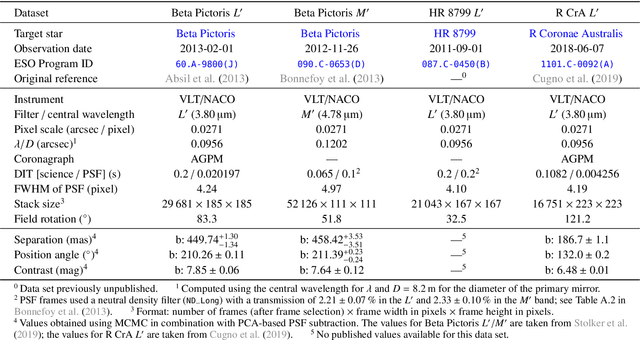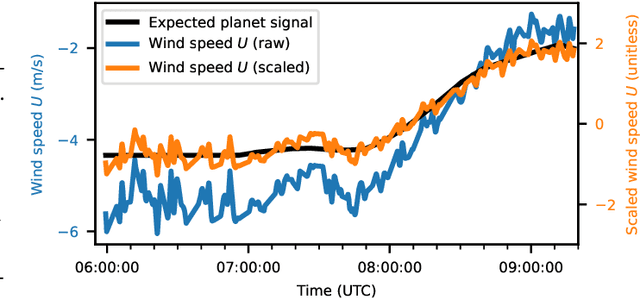Markus J. Bonse
Half-sibling regression meets exoplanet imaging: PSF modeling and subtraction using a flexible, domain knowledge-driven, causal framework
Apr 07, 2022



Abstract:High-contrast imaging of exoplanets hinges on powerful post-processing methods to denoise the data and separate the signal of a companion from its host star, which is typically orders of magnitude brighter. Existing post-processing algorithms do not use all prior domain knowledge that is available about the problem. We propose a new method that builds on our understanding of the systematic noise and the causal structure of the data-generating process. Our algorithm is based on a modified version of half-sibling regression (HSR), a flexible denoising framework that combines ideas from the fields of machine learning and causality. We adapt the method to address the specific requirements of high-contrast exoplanet imaging data obtained in pupil tracking mode. The key idea is to estimate the systematic noise in a pixel by regressing the time series of this pixel onto a set of causally independent, signal-free predictor pixels. We use regularized linear models in this work; however, other (non-linear) models are also possible. In a second step, we demonstrate how the HSR framework allows us to incorporate observing conditions such as wind speed or air temperature as additional predictors. When we apply our method to four data sets from the VLT/NACO instrument, our algorithm provides a better false-positive fraction than PCA-based PSF subtraction, a popular baseline method in the field. Additionally, we find that the HSR-based method provides direct and accurate estimates for the contrast of the exoplanets without the need to insert artificial companions for calibration in the data sets. Finally, we present first evidence that using the observing conditions as additional predictors can improve the results. Our HSR-based method provides an alternative, flexible and promising approach to the challenge of modeling and subtracting the stellar PSF and systematic noise in exoplanet imaging data.
Physically constrained causal noise models for high-contrast imaging of exoplanets
Oct 12, 2020



Abstract:The detection of exoplanets in high-contrast imaging (HCI) data hinges on post-processing methods to remove spurious light from the host star. So far, existing methods for this task hardly utilize any of the available domain knowledge about the problem explicitly. We propose a new approach to HCI post-processing based on a modified half-sibling regression scheme, and show how we use this framework to combine machine learning with existing scientific domain knowledge. On three real data sets, we demonstrate that the resulting system performs up to a factor of 4 times better than one of the currently leading algorithms. This has the potential to allow significant discoveries of exoplanets both in new and archival data.
 Add to Chrome
Add to Chrome Add to Firefox
Add to Firefox Add to Edge
Add to Edge